Sustainable Mobility Matters—Winter 2024
This quarterly newsletter highlights recent projects, partnerships, and publications related to NREL's sustainable mobility research.
Subscribe to receive this newsletter via email.
NREL's Sustainable Transportation Research Is Built for the Long Haul
In terms of transportation electrification, 2023 was a year for the books. And 2024 is promising to be the same. Just a few weeks into the new year, we're already seeing electric vehicles (EVs) smash sales records, grid modernization projects kick off, and cutting-edge clean transportation technologies tested in the field. NREL research, modeling, and analysis are woven into the fabric of each of these milestones, accelerating the clean energy transition at every turn.
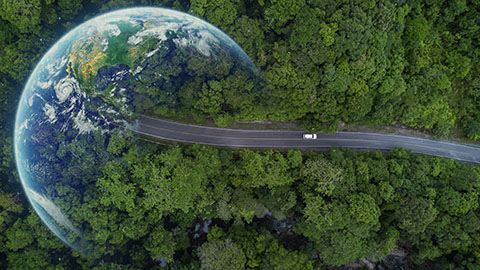
The focus of these efforts has been speed—how quickly we can turn the tide of climate change and put new, sustainable transportation systems into place. But as I see our efforts accelerate the nation's energy transition, I've also been thinking about the importance of our long-term endurance and resolve. NREL's research, capabilities, and laboratories are built to last. For decades, we have been working to set the stage for sustainable transportation, and our work will continue for as long as it's needed.
That's one guiding focus of NREL's sustainable mobility systems research, which is working to ensure that the mobility systems of the future are efficient, affordable, safe, and equitable. This research spans cutting-edge micromobility technologies—such as e-bikes, scooters, connected and automated vehicles, and public transit—to the behavioral science behind the adoption of sustainable transportation. And of course, it's fueled by brand-new approaches to data analysis.
So, let's celebrate a new year of research. NREL researchers, for instance, recently identified the fast-charging infrastructure needed to enable EV travel to national parks. They demonstrated the connection between EV and solar panel ownership. They began a new collaboration to develop lithium-ion battery recycling techniques that are both sustainable and profitable. And they helped shape the Fifth National Climate Assessment, the country's most comprehensive effort to address the climate crisis.
Then, let's roll up our sleeves and prepare for the next challenge. After all, we're in this for the long haul.
Drive on,

Chris Gearhart
Director, NREL's Center for Integrated Mobility Sciences
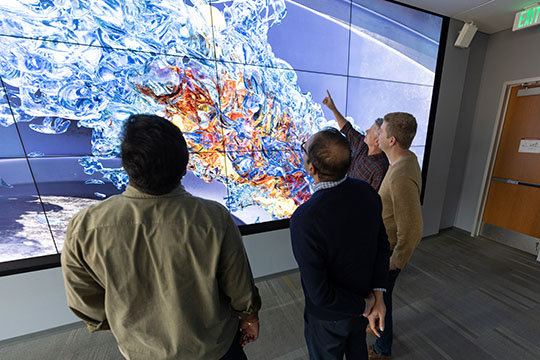
On the Ground in Colorado, NREL Is Simulating Sustainable Aviation Fuel Combustion During Flight
In a project supported by the U.S. Department of Energy, a cross-disciplinary research team is gathering meticulous fuel chemistry data to equip the aviation industry with an ultra-detailed sustainable aviation fuel (SAF) combustion simulation. Powered by supercomputers, the “virtual jet engine” can predict how SAF performs during flight and provide insights on how to tune it to maximize its safety and performance.
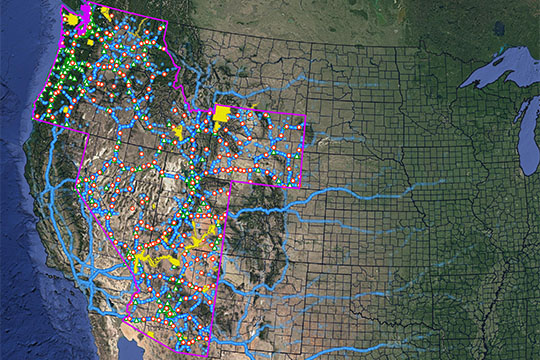
Study Investigates EV Fast-Charging Infrastructure Needed To Enable Travel to National Parks
As EV adoption continues to grow, people traveling to national parks or other remote areas may wonder whether sufficient charging infrastructure will be available. A recent NREL study estimated the amount of fast-charging infrastructure needed to enable seamless electrified road trips to national parks in seven Western states. The timely analysis leveraged NREL's EVI-RoadTrip tool, a computational model that estimates on-route charging infrastructure needs for long-distance travel.
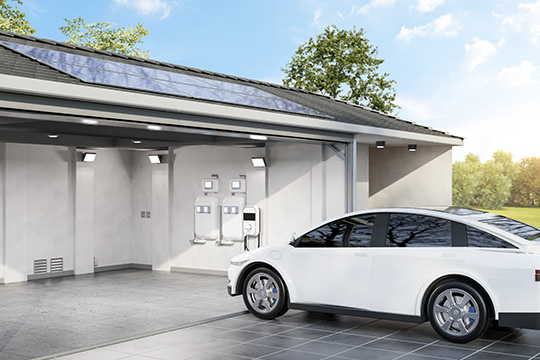
Analysis Unveils Connection Between Electric Vehicles and Photovoltaics
An NREL behavioral study found that EV owners are more likely to add photovoltaics (PVs) to their homes. As discussed in NREL's Transforming Energy podcast, 25% of EV owners also own a PV system, while only 8% of non-EV owners do. EV owners may be more inclined to invest in PV to offset vehicle charging costs on their home energy bills. Attitude and personality traits also come into play.

NREL Contributes Insights to a Landmark Climate Change Analysis
Three NREL researchers had the opportunity to contribute to the recently released Fifth National Climate Assessment. The researchers partnered with hundreds of scientists and Indigenous and local experts from countless areas of climate and energy expertise. The report has been hailed by the White House as "the most comprehensive federal effort to assess the state of climate science and communicate the impacts of climate change."
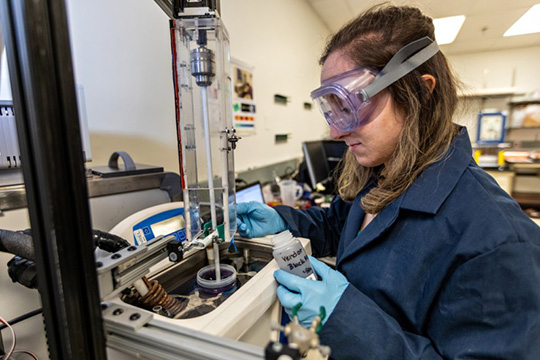
New Collaboration Balances Sustainability and Profitability of Lithium-Ion Battery Recycling
In our pursuit of sustainable energy solutions, the environmental and supply chain impacts of the lithium-ion batteries that power EVs cannot be overlooked. Cobalt- and nickel-free lithium iron phosphate batteries may offer an eco-friendlier solution, but they also present a challenge for battery recyclers, who target high-value critical materials for extraction. A new collaboration between NREL and ACE Green Recycling aims to develop and optimize recycling techniques that will bridge the gap between sustainability and profitability.
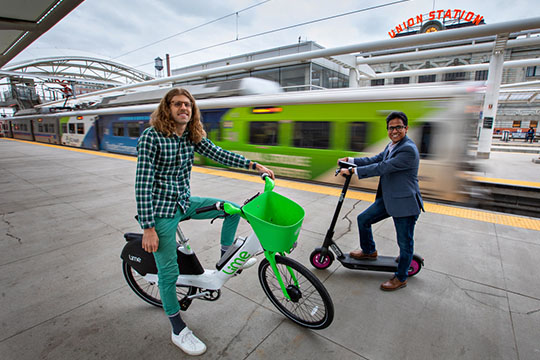
Data Collection and Analysis Tools Enable Evaluation of E-Bike Impacts on Sustainable, Equitable, Efficient Mobility
Researchers brought together NREL's Open Platform for Agile Trip Heuristics (NREL OpenPATH) travel data collection app and Mobility Energy Productivity (MEP) tool to enable in-depth evaluation of emerging transportation modes such as e-bikes. To demonstrate the integrated tools in action, they conducted MEP calculations using NREL OpenPATH travel data from a Colorado-based e-bike pilot program. Analysis results show that parts of Denver's urban core provide similar time-, cost-, and energy-efficient access to opportunities using e-bikes compared to driving.
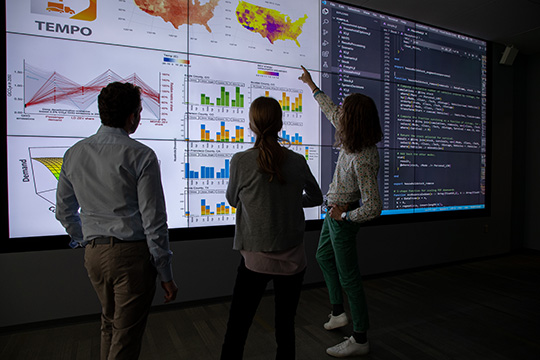
Researchers Identify Pathways To Cut Transportation Emissions With Transportation Energy & Mobility Pathway Options Model
NREL researchers used the TEMPO: Transportation Energy & Mobility Pathway Options™ model to run thousands of simulations to identify solutions to decarbonize passenger and freight travel. The team concluded that rapidly adopting zero-emission EVs, transitioning to a clean electric grid, increasing large-scale use of sustainable fuels in aviation, and managing travel demand could cut today's transportation emissions up to 89% by 2050. The analysis can be used to inform technology, behavior, and policy changes that will enable a sustainable energy transition for the transportation sector.
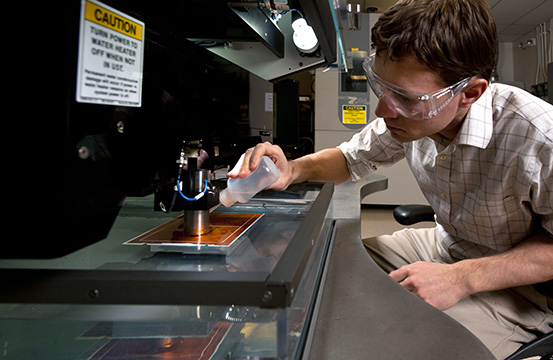
A Focus on Failure Leads to Power Electronics' Commercial Success
Most people don't like to talk about failure—or even think about it. But for NREL's Douglas DeVoto, who leads reliability and prognostics research for automotive power electronics, a focus on failure is the best way to ensure that when power electronics hit the market, they succeed. Now, DeVoto has earned the prestigious Excellence in Mechanics Award by the Electronic and Photonic Packaging Division of the American Society of Mechanical Engineers.
Get To Know Our Team: Mark Chung

A conversation with Mark Chung, who leads NREL's Hydrogen Systems Analysis team.
What does your work focus on?
I lead research on the techno-economics of hydrogen production, transmission, distribution, storage, end use, and systems integration.
What single mobility challenge would you say we need to prioritize in the next 5 years?
Heavy-duty vehicle fueling infrastructure is probably the biggest challenge. We expect to see deployment of heavy-duty fuel cell EVs in many regions of the country, so figuring out how to deliver low-carbon hydrogen at competitive prices to fueling stations will be key. Fortunately, our team is well poised to answer these questions and has been supporting the U.S. Environmental Protection Agency and the U.S. Department of Energy's Hydrogen and Fuel Cell Technologies Office in this effort.
Can you share a defining moment in your research career?
A key moment in my career was getting hired at NREL 3 years ago. The team took a chance on me as someone they didn't know, and it was my big transition out of the fossil fuel industry. I have accomplished a lot in my short 3 years at NREL thanks to a phenomenal team.
What piece of research are you most proud of conducting?
There isn't any single piece that stands out, but I am proud of my team's achievements in 2023. In addition to the research, we've developed and enhanced three new techno-economic analysis models that are now publicly available (BlendPATH, ProFAST, and the SERA: Scenario Evaluation and Regionalization Analysis model). I led multiple hydrogen feasibility analysis projects for the U.S. Department of Energy's Regional Clean Hydrogen Hubs Program applicants and will soon publish results on two new projects: sustainability metrics for hydrogen infrastructure projects and optimized hydrogen infrastructure needed to support heavy-duty fuel cell electric vehicle fueling nationally.
Must Reads
Federal Aviation Administration Study Quantifies the Impacts of Electric Aviation
The advent of electric air travel—including electric vertical takeoff and landing (eVTOL) technologies—has led to the need to define new requirements for planning, designing, and establishing the infrastructure required to support these aircraft. In a new study sponsored by the Federal Aviation Administration, NREL researchers examine the unique challenges and consequences of electrified aviation, including the required infrastructure itself and its effects on the electric grid, emissions, and the overall economy.
Los Angeles 100% Renewable Energy Study and Equity Strategies Answers the Call for an Equitable Clean Energy Future
The Los Angeles 100% Renewable Energy Study (LA100), commissioned by the Los Angeles Department of Water and Power (LADWP) and published by NREL in 2021, charted a road map to 100% renewable energy in Los Angeles by 2045. But NREL's work didn't end there. Although all communities will share in the benefits of the clean energy transition, improving equity requires intentionally designed policies and programs. To answer this call, NREL led the LA100 Equity Strategies project to analyze how LADWP programs can be improved or expanded to achieve equity for disadvantaged communities, incorporating what community members themselves feel is needed to achieve more equitable outcomes. Check out the equity strategies executive summary before diving in to the transportation insights in Chapter 10: Household Transportation Electrification and Chapter 11: Truck Electrification for Improved Air Quality and Health.
NREL's Annual Technology Baseline Sets the Standard for Transportation Data
The rapid pace of technology development can make it difficult for researchers to find up-to-date, reliable, and consistent information in one place. In response to this need, NREL's Transportation Annual Technology Baseline (ATB) publishes freely available, consistent data sets of technology cost and performance that are used widely in analyses and projections across the transportation sector. Check out the 2022 Transportation ATB for the latest updates, including new categories across medium- and heavy-duty vehicles, aviation, and fuels.
Did You Know?
NREL transportation and mobility researchers showcased their latest research at the 103rd Annual Meeting of the Transportation Research Board Jan. 7–11, 2024. The meeting drew thousands of transportation professionals from around the world. Presentations by NREL researchers focused on transportation decarbonization, transportation modeling and analysis, sustainable aviation, airport wayfinding, electrified and on-demand transit, micromobility, vehicle automation, charging infrastructure analysis, mobility equity, and disaster resilience.
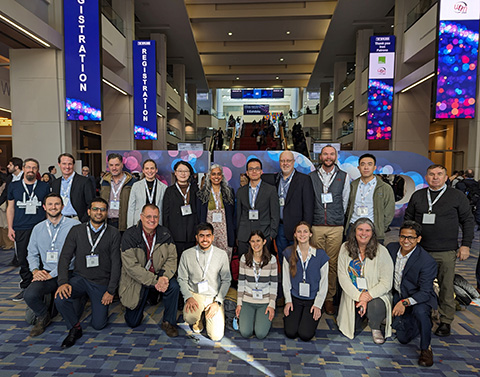
In the News
Biden Wants Network of 500,000 EV Chargers. Two States Are Getting a Head Start.
The Washington Post quotes Eric Wood
The uncertainty of future funding and equipment availability is prompting states to work quickly to open charging stations funded by $5 billion from the federal Bipartisan Infrastructure Law. NREL analyses show that as more people adopt EVs, the need for more chargers grows, doubling the White House's goal of 500,000 chargers.
We Can Charge Phones Wirelessly. What About Electric Vehicles?
Marketplace quotes Andrew Meintz
Wireless charging could allow EVs to be less reliant on bigger batteries to gain more range. Vehicles like electric forklifts, buses, and delivery trucks could charge when they make their stops, allowing for reduced vehicle weight due to lower battery capacity.
ChargeX Working Groups Led by Representatives From Electrify America, GM, ABB
FedScoop mentions Kristi Moriarty
The National Charging Experience (ChargeX) Consortium, funded by the Joint Office of Energy and Transportation, is working to improve public charging in the United States. It is made up of three working groups, led by NREL, Argonne National Laboratory, and Idaho National Laboratory, and supported by the three industry organizations: General Motors, Electrify America, and ABB E-mobility.
There's Gold (and Lithium and Cobalt) in All Those EV Battery Packs
The Verge mentions NREL
EV battery recycling companies are working to meet the need for raw EV battery materials by recycling lithium and cobalt found in older batteries or defective, discarded batteries from manufacturers. Processes to recover these components have been found to be more efficient and have less environmental impact than mining virgin materials.
Share
